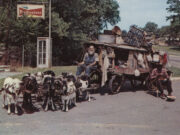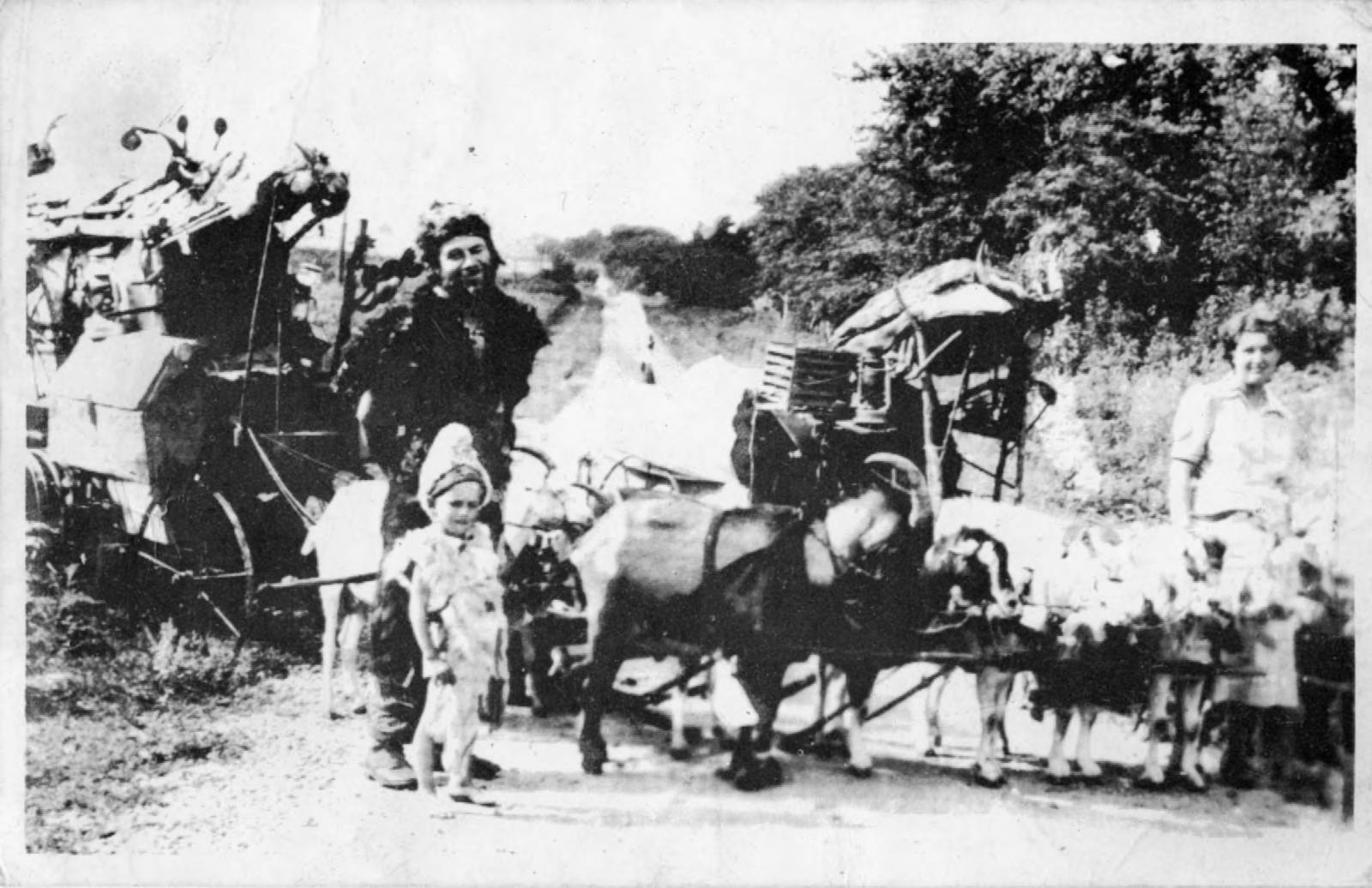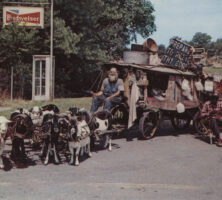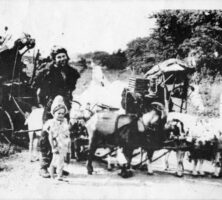A traveling preacher, Charles “Ches” McCartney was a significant folk and religious figure in Georgia for more than four decades, and a likely influence on the works of the writer Flannery O’Connor. He traveled around the United States driving an iron-wheeled caravan of between twelve and thirty goats and was known as the “Goat Man.”
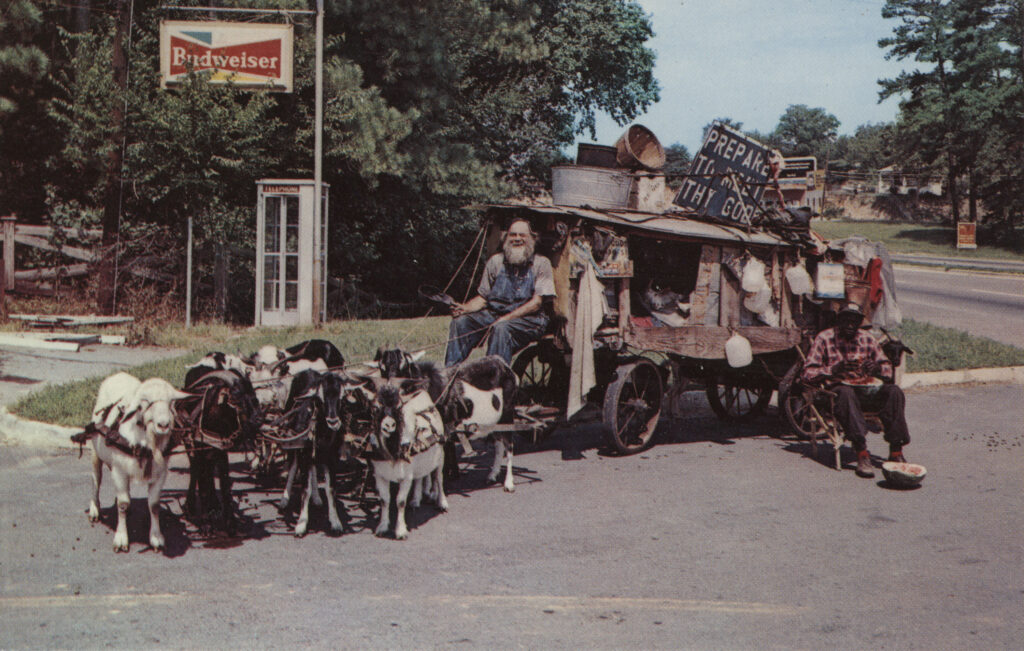
Courtesy of Hargrett Rare Book and Manuscript Library, University of Georgia Libraries.
McCartney was born on July 6, 1901, in Sigourney, Iowa. He was married three times, once to a Spanish knife thrower ten years his senior, and he had one son, Albert Gene, and possibly two to four others.
In 1935 McCartney was injured while working for the Works Progress Administration, a New Deal program, and experienced a religious awakening. Subsequently he hitched up his team of goats to a wagon and took to the open road with his first wife and son. His wife made goatskin clothes for him and his son to wear as a gimmick during their travels, but she quickly grew tired of the road and returned to Iowa, taking their son with her. Later in life, McCartney claimed to have visited all of the lower forty-eight states as well as Alaska and Canada. His fascination with wandering was fueled by reading Daniel Defoe’s novel Robinson Crusoe (1719) and the Bible.
Eventually settling in Jeffersonville, in Twiggs County, he established the Free Thinking Christian Mission. It is not clear why he settled in Georgia. From the mission he journeyed out with his goat-pulled wagon to preach his message of impending and eternal damnation for sinners. His path through the countryside was easily traceable from the distinctive wooden signs he tacked on trees by the roadside, signs bearing such harsh messages as “Prepare to Meet Thy God” with the fires of hell painted underneath.
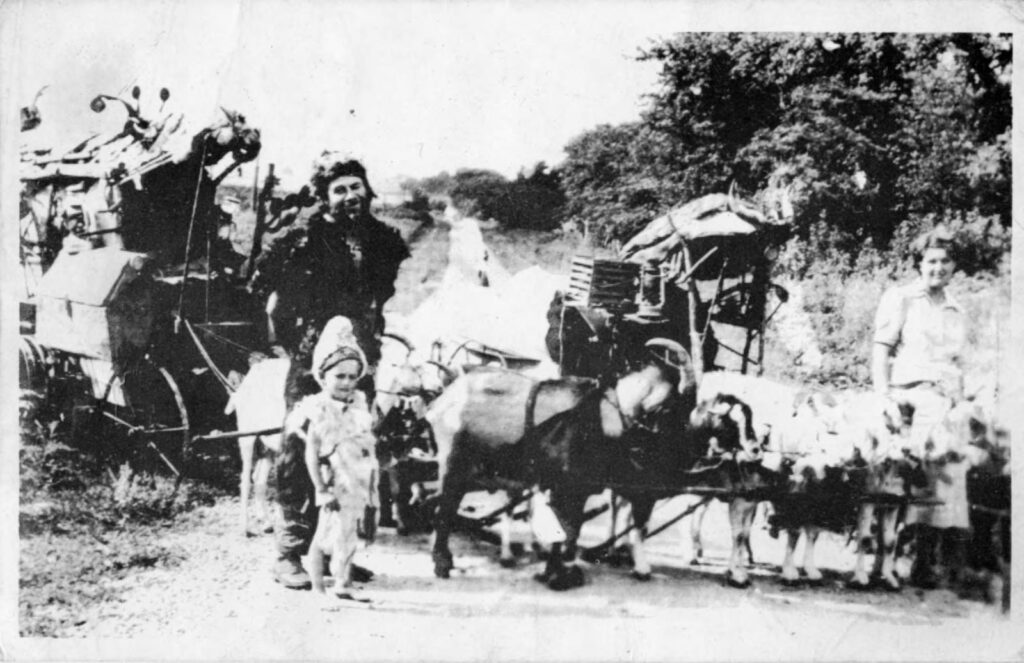
Courtesy of Special Collections & Archives, Georgia State University Library.
McCartney camped in many a small Georgia town and was the object of both interest and fear. As his fame grew, he dressed in goatskins and sold postcards of himself and his family. He lived off of goat’s milk and rarely bathed. News of his fiery sermons caught the attention of the writer Flannery O’Connor, who lived in Milledgeville. She mentioned him in her letters, and she saw in him the Protestant expression of her Catholic religious passion. Though she resisted revealing the sources of her characters, the notoriety of the Goat Man and her remarks about him, as well as her comments about prophetic characters like Mason Tarwater in her novel The Violent Bear It Away (1960), suggest that he was an influence on her writing.
Occasionally, McCartney was attacked and mugged during his trips around the country. During one such attack in 1969, three young men assaulted him while he slept in his cart. He suffered three broken ribs, and two of his favorite goats were killed. Following this incident McCartney retired to his Jeffersonville mission and sold his remaining goats. In 1978 his home burned down, after which he purchased and lived in a bus.
In 1985, during one of his final journeys away from Georgia, McCartney set out on foot to California, hoping to meet the actress Morgan Fairchild, whom he wanted to marry. En route to California, he was again mugged and hospitalized for his injuries. Following his return to Georgia, he left the road for good in 1987. He spent his final years as a local celebrity at a nursing home in Macon, where he died at the age of ninety-seven on November 15, 1998.


